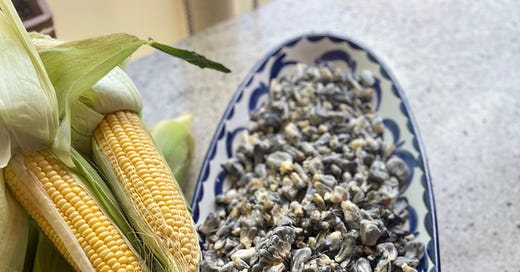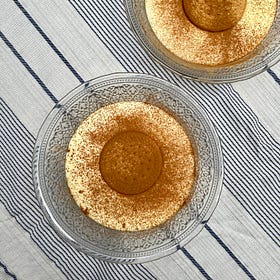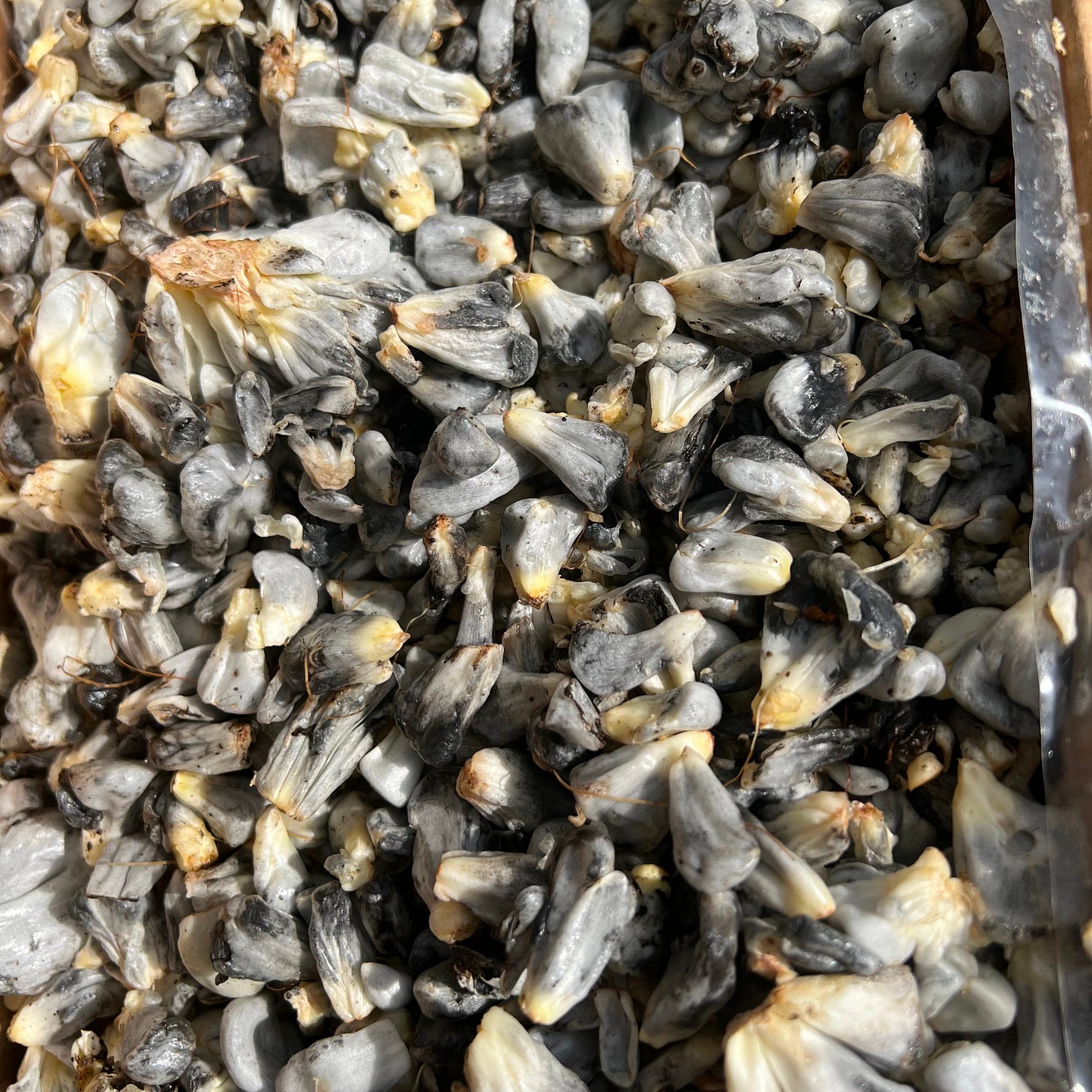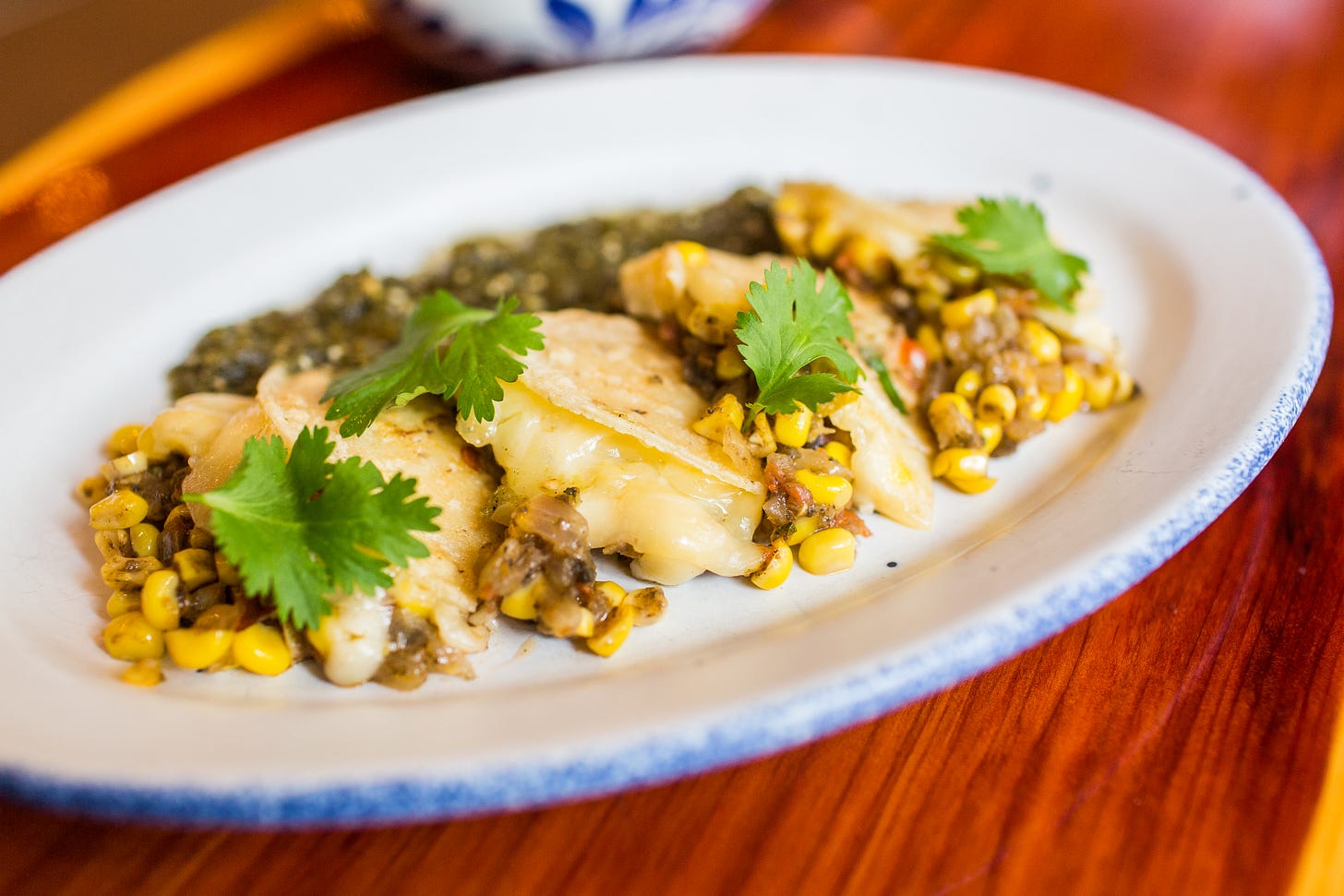Hello, people, happy belated Mother’s Day…to everyone who is a mother, is thinking about their mother, or who celebrates someone who has been a mother to them! Did you make a family meal (also I would love to hear if you have a ritual for your weekend family meals! The community loves to hear from you!)—or Natillas con galeta? How did it go?
Today, I want to talk about a really special ingredient, one that is a little hard to find, but is so versatile if you can get it—you can saute it, put it in quesadillas (as we do at Oyamel), put it in tacos, soup, empanadas, even an omelette! And if you have a creative use for it, I would love to hear it! I am talking about huitlacoche, the most amazing, savory, smoky, incredibly textured fungus you can find. Maybe I am a little biased? I love truffles, which are of course wonderful in their own right, but today, it is time to talk about huitlacoche season.
If you aren’t familiar, huitlacoche is technically a corn mushroom, or better known as “corn smut” here in the US—grown on corn cobs during the spring season, though the season can run until early fall). It is technically considered a disease, and it happens when crops are too wet in warm weather, but it is a delicacy in Mexico, and I think it should be considered a delicacy everywhere. It is caused by the fungus Ustilago maydis, which usually occurs during the rainiest parts of the year in Mexico.
This delicacy goes WAY back in Mexico, way before the Spanish arrived—the Aztecs were the ones who named it and recognized its amazing potential, considering it a sacred crop that was celebrated when it showed up in their cornfields. They used it as food and as medicine, and their worship of it has continued into modern Mexican culture.
In the US, there might be less love, but a few producers grow it. Most corn farmers see it as a bad thing, something that ruins a crop, but in my opinion, they could be capitalizing on it, because when you’ve tried huitlacoche, you know you’re in for something special. Here in the U.S, Roy Burns of Burns Farms in Florida recognized the value of this amazing ingredient, and he has been growing it since 1992...we’ve been able to put Roy’s huitlacoche on the menu for years at Oyamel. But Roy is a rarity, so his product is always in demand by American chefs who appreciate this special culinary treasure. Unfortunately, Roy’s crops were destroyed by a bad hurricane season last year, so he has to start over this season—which means planting corn, waiting for it to grow, and waiting for the fungus to develop before he can harvest it. Luckily chef Claudio Foschi at Oyamel found another source from Oaxaca, and it’s a great product, at least until Roy gets his farm back to speed.
When you see huitlacoche on an ear of corn you might think it looks a little strange at first, if you’ve never seen it…when you peel back the husks, you expect to see something shiny, and usually expect a pale yellow, or bright gold, red, or purple…but with huitlacoche, you will see a gray-purple layer of swollen kernels. It is firm to the touch, very similar to a mushroom, and smells very earthy. If you taste it raw, it will taste a lot like a mushroom, but it’s also smoky and a little nutty with some hints of the corn.
It’s a super versatile ingredient—some classic Mexican preparations include a savory soup and a blue corn quesadilla with Oaxacan cheese. In fact, at Oyamel, we usually offer it exactly that way, but you can get creative with it!
I asked Claudio Foschi about huitlacoche. “You can say it’s like a mushroom but it doesn’t compare to anything else. That’s why people call it a truffle, very earthy, very umami.
“It does well by itself but also associates well with cream and rich fatty ingredients—so we can actually usually use it like a truffle, highlight and enhance its flavors. It goes really well with tomatoes, garlic, and corn, or with cream, cheese, and rice, like quesadilla and tacos. I wouldn’t use flavors too acidic or too spicy.”
Have you ever tasted huitlacoche? If not, get out there and give it a try!








Living in San Miguel de Allende, we can get huitlacoche almost year round. I love it on tacos and in crepes the way Emperor Maximilian liked it with a poblano cream sauce.
So delicious.